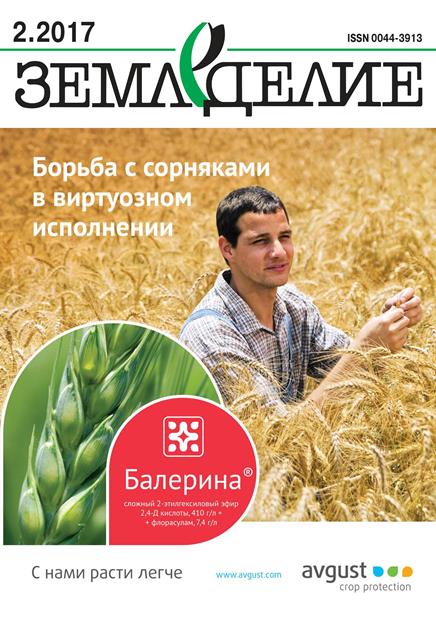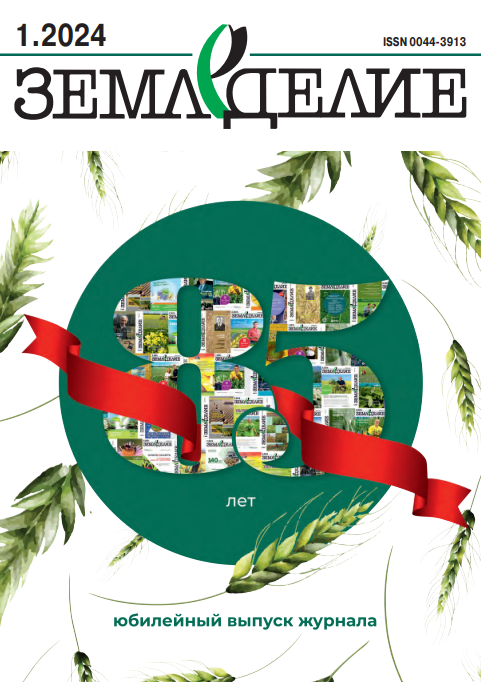Особенности внутрихозяйственного семеноводства кормовой свёклы и брюквы при использовании регуляторов роста
Земледелие, 2017, № 2
УДК 635.126:631.811.98
Е.В. ЗОЛЬНИКОВА, соискатель, старший лаборант
Адрес электронной почты защищен от спам-ботов. Для просмотра адреса в вашем браузере должен быть включен Javascript.
А.Н. ПОСТНИКОВ, доктор сельскохозяйственных наук, профессор
Российский государственный аграрный университет – МСХА имени К.А.Тимирязева, ул. Тимирязевская, 49, Москва, 127550, Российская Федерация
В 2010-2013 гг. на базе Полевой опытной станции РГАУ-МСХА имени К.А. Тимирязева (Центральный район Нечерноземной зоны РФ) на участках с дерново-подзолистой среднесуглинистой почвой (рН 5,6-6,3) проведены исследования по изучению реакции кормовой свёклы (Beta vulgaris L.) сортотипа Эккендорфская желтая и брюквы (Brassica napus rapifera L.) сорта Вышегородская выращиваемых на семенные цели, на применение в первый год вегетации регуляторов роста растений ИУК (индолил-3-уксусная кислота), Эпин-экстра и 6-БАП (6-бензиламинопурин) и их последействие во второй год. В статье рассмотрены вопросы целесообразности использования этих регуляторов роста с точки зрения ведения внутрихозяйственного семеноводства, а также их влияния на размеры и качество урожая корнеплодов и семян, а, следовательно, и на затраты, связанные, в частности, с потребностью в корнеплодах и семенах, а также площадью под посев и посадку на семенных участках. При условии полного покрытия потребности в семенах кормовой свёклы применение регулятора ИУК приводит к снижению площади семенного участка 1-го года с 1,9 до 0,7 га, 2-го года – с 0,48 до 0,27 га), что обусловлено увеличением сбора кондиционных семян (+31,9 г с одного растения к контролю). В опытах с брюквой обработка тем же регулятором обеспечивала повышение выхода кондиционных семян, по сравнению с контролем, на 17,5 г/раст. и в дальнейшем сокращение числа маточников, необходимых для заложения семенного участка второго года, с 7 тыс. шт. до 4 тыс. шт. Это дает возможность уменьшить площадь семенных участков 1-го года на 33,3 %, 2-го года – на 44,0 %. Обработка регуляторами Эпин-экстра и 6-БАП также способствовала сокращению площади семенного участка, что было обусловлено повышенным выходом кондиционных семян с растения. На брюкве при использовании регулятора Эпин-экстра величина этого показателя возросла, по сравнению с контролем, на 9,1 г, а 6-БАП в опытах с кормовой свёклой – на 16,2 г
Ключевые слова: кормовая свёкла, брюква, регуляция роста, семеноводство.
Для цитирования: Зольникова Е.В., Постников А.Н. Особенности внутрихозяй- ственного семеноводства кормовой свёклы и брюквы при использовании регуляторов роста // Земледелие. 2017. № 2. С. 29-31.
Peculiarities of Intrafarm Seed Production of Fodder Beet and Turnip at Application of Growth Regulators
E.V. Zol’nikova, A.N. Postnikov
Russian State Agrarian University – Moscow Timiryazev Agricultural Academy, ul. Timiryazevskaya, 49, Moskva, 127550, Russian Federation
We investigated the reaction of fodder beet (Beta vulgaris L.) and turnip (Brassica napus rapifera L.) on the application of growth regulators IAA (indole acetic acid), Epin-extra and 6-BAP (6-benzylaminopurine) in the first year of vegetation and their aftereffect. The experiments were carried out on the premises of the Field experimental station of the Russian State Agrarian University - Moscow Timiryazev Agricultural Academy (Central region of the Central Chernozem zone of the Russian Federation) in 2010-2013, at plots with medium loamy sodpodzol soil (pH is 5.6-6.3). We used fodder beet of the variety type ‘Ekkendorfskaya Zheltaya’ and turnip ‘Vyshegorodskaya’. The article examines the questions about the expediency of usage of these growth regulators in respect to intrafarm seed-growing, as well their influence on change of quantity and quality of the yield of roots and seeds, and, consequently, on change of costs, related, in particular, with need for roots, seeds, and areas for planting on seed plots. Provided the full satisfaction of needs for fodder beet seeds, the use of IAA leads to a decrease in the area of seed plot of the first year from 1.9 to 0.7 ha, of the second year – from 0.48 to 0.27 ha, due to the increase in the harvest of certified seeds (plus 31.9 g per plant in comparison with the control). In the experiments with turnip the treatment by the same regulator provides the increase in the harvest of certified seeds by 17.5 g/plant, compared to the control, and, further, the reduction of the number of the parent plants, required for the foundation of the seed plot of the second year, from 7,000 to 4,000 units. This makes it possible to reduce the area under seed plots by 33.3 % for the first year and by 44.0 % – for the second year. The treatment by regulators Epin-extra and 6-BAP also contributed to the reduction in the area of seed plot due to a higher yield of certified seeds per plant. For turnip the value of this index increased by 9.1 g, in comparison with the control, at the application of Epin-extra; for 6-BAP the increase was 16.2 g.
Keywords: fodder beet, turnip, growth regulation, seed production.
Author Details: E.V. Zol’nikova, applicant, research technician (e-mail: Zolnikova.82@mail. ru); A.N. Postnikov, D. Sc. (Agr.), professor.
For citation: Zol’nikova E.V., Postnikov A.N. Peculiarities of Intrafarm Seed Production of Fodder Beet and Turnip at Application of Growth Regulators. Zemledelie. 2017. No 2. Pp. 29-31. (in Russ.)










